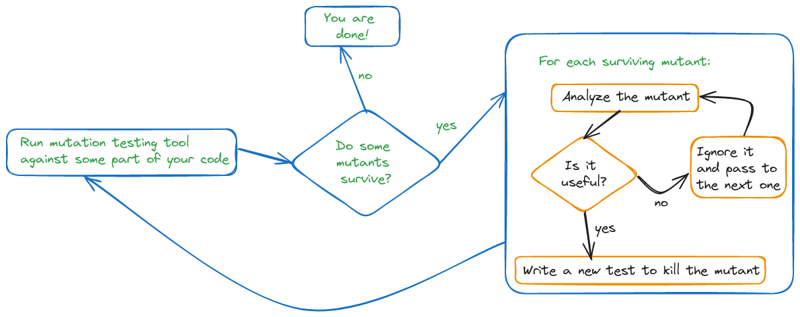Introduction to Node.js Worker Threads
Node.js is single-threaded by default, which means long-running tasks can block the event loop and degrade performance. To solve this, Node.js introduced Worker Threads, enabling multi-threading and background task processing. What are Worker Threads? Worker Threads allow you to run JavaScript in parallel on multiple threads. They are useful for CPU-intensive operations, large data processing, and background tasks that would otherwise block the main thread. When to Use Worker Threads CPU-bound tasks (e.g., heavy calculations, image processing) Parsing large files Performing concurrent non-I/O operations Setting Up Worker Threads You need to use the worker_threads module available in Node.js v10.5.0 and above (stable from v12). Basic Example main.js const { Worker } = require('worker_threads'); const worker = new Worker('./worker.js'); worker.on('message', (msg) => { console.log('Message from worker:', msg); }); worker.on('error', (err) => { console.error('Worker error:', err); }); worker.on('exit', (code) => { if (code !== 0) console.log(`Worker stopped with exit code ${code}`); }); worker.js const { parentPort } = require('worker_threads'); // Simulate heavy task let sum = 0; for (let i = 0; i { console.log('Message from worker:', msg); }); Performance Tips Avoid using Worker Threads for I/O tasks—use async I/O instead. Use a worker pool for handling multiple tasks. Offload only CPU-heavy operations to keep the main thread responsive. Conclusion Worker Threads provide a powerful way to scale Node.js applications by leveraging multi-threading for intensive tasks. Understanding and using them properly can significantly improve performance without compromising the non-blocking nature of Node.js. Have you tried using Worker Threads in your projects? Share your experience below!

Node.js is single-threaded by default, which means long-running tasks can block the event loop and degrade performance. To solve this, Node.js introduced Worker Threads, enabling multi-threading and background task processing.
What are Worker Threads?
Worker Threads allow you to run JavaScript in parallel on multiple threads. They are useful for CPU-intensive operations, large data processing, and background tasks that would otherwise block the main thread.
When to Use Worker Threads
- CPU-bound tasks (e.g., heavy calculations, image processing)
- Parsing large files
- Performing concurrent non-I/O operations
Setting Up Worker Threads
You need to use the worker_threads module available in Node.js v10.5.0 and above (stable from v12).
Basic Example
main.js
const { Worker } = require('worker_threads');
const worker = new Worker('./worker.js');
worker.on('message', (msg) => {
console.log('Message from worker:', msg);
});
worker.on('error', (err) => {
console.error('Worker error:', err);
});
worker.on('exit', (code) => {
if (code !== 0) console.log(`Worker stopped with exit code ${code}`);
});
worker.js
const { parentPort } = require('worker_threads');
// Simulate heavy task
let sum = 0;
for (let i = 0; i < 1e9; i++) {
sum += i;
}
parentPort.postMessage(`Sum is ${sum}`);
Sharing Data Between Threads
Use SharedArrayBuffer or MessageChannel for shared memory or messaging:
const { Worker, MessageChannel } = require('worker_threads');
const { port1, port2 } = new MessageChannel();
const worker = new Worker('./worker.js');
worker.postMessage({ port: port2 }, [port2]);
port1.on('message', (msg) => {
console.log('Message from worker:', msg);
});
Performance Tips
- Avoid using Worker Threads for I/O tasks—use async I/O instead.
- Use a worker pool for handling multiple tasks.
- Offload only CPU-heavy operations to keep the main thread responsive.
Conclusion
Worker Threads provide a powerful way to scale Node.js applications by leveraging multi-threading for intensive tasks. Understanding and using them properly can significantly improve performance without compromising the non-blocking nature of Node.js.
Have you tried using Worker Threads in your projects? Share your experience below!









































































































































































![[The AI Show Episode 142]: ChatGPT’s New Image Generator, Studio Ghibli Craze and Backlash, Gemini 2.5, OpenAI Academy, 4o Updates, Vibe Marketing & xAI Acquires X](https://www.marketingaiinstitute.com/hubfs/ep%20142%20cover.png)


























































































































![[FREE EBOOKS] The Kubernetes Bible, The Ultimate Linux Shell Scripting Guide & Four More Best Selling Titles](https://www.javacodegeeks.com/wp-content/uploads/2012/12/jcg-logo.jpg)



![From drop-out to software architect with Jason Lengstorf [Podcast #167]](https://cdn.hashnode.com/res/hashnode/image/upload/v1743796461357/f3d19cd7-e6f5-4d7c-8bfc-eb974bc8da68.png?#)







































































































.png?#)




.jpg?#)




















 (1).webp?#)











_Christophe_Coat_Alamy.jpg?#)








































































































![Rapidus in Talks With Apple as It Accelerates Toward 2nm Chip Production [Report]](https://www.iclarified.com/images/news/96937/96937/96937-640.jpg)








































































































































